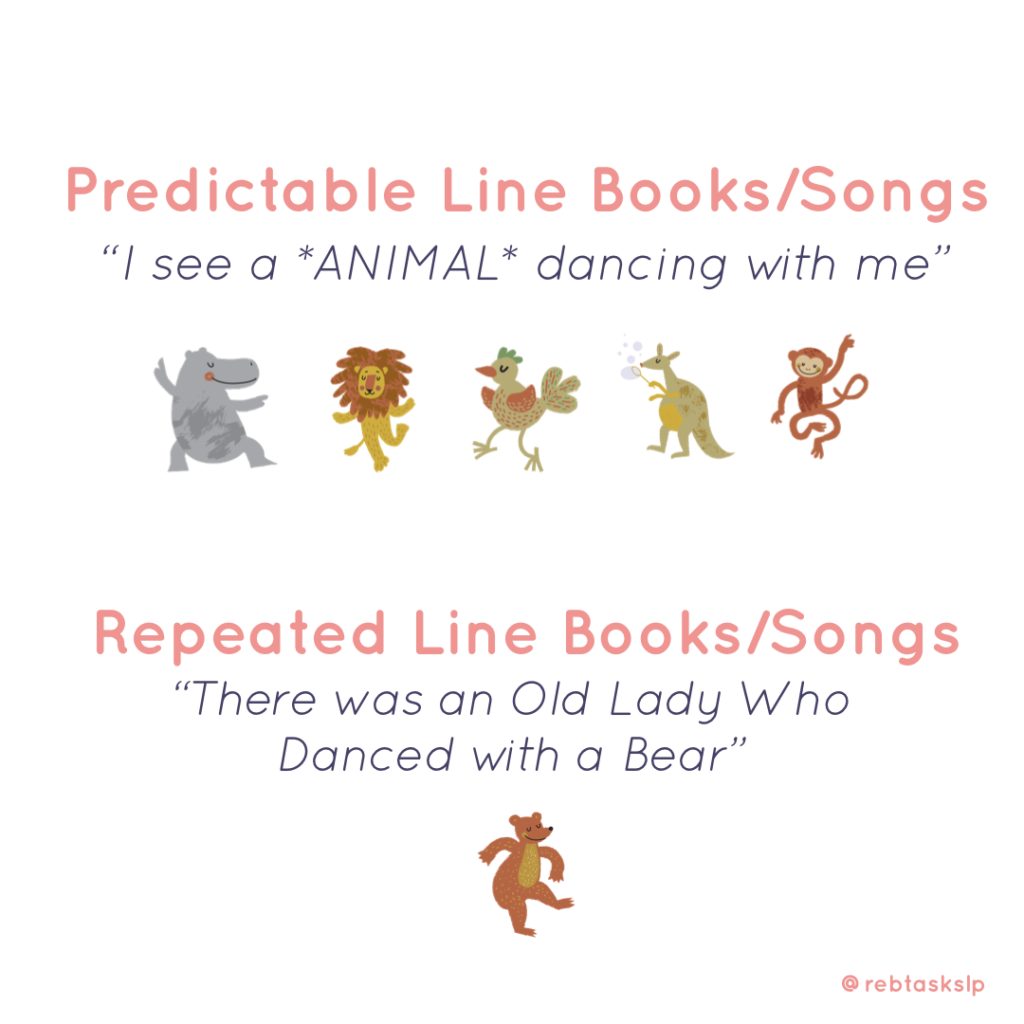
Two effective literacy strategies for emerging communication are the repeated line and predictable line method.
Repeated lines are found in many children’s songs and children’s books. A repeated line is a line or phrase that happens again and again throughout the book. For example, in the book, There Was an Old Lady Who Swallowed a Fly, every page starts “there was an old lady who swallowed a fly“. More lines are added on each page after that, but the line repeats itself throughout the whole book. The child expects that line will come up, so that when you turn the page, pause, point and show it to them they can try and vocalize the line. Speech pathologists love these books because we understand that the repeated lines help to elicit more expressive and receptive language in early communicators (speech!)
Predictable lines, are similar to repeated lines, but a word or small phrase changes every time. Think about the book, Brown Bear Brown. The line stays the same throughout the whole book *Animal, Animal* + “what do you see?”… the only thing that changes is the type of animal. That means the line is predictable, the child knows what to expect. These types of books are classics for a reason. They work! How about modern nursery rhymes and songs? Baby Shark! Every line is *Family Member* + “Shark Do Do Do”. It is pretty predictable, that after the family member, the next line is “Shark Do Do Do”. In Wheels on The Bus all the lines end in “all through the town”, again reinforcing predictability. So, go ahead write a winning hit using this method or just work on it at home by coming up with your own songs and rhymes.
Think about books that have lots of repeated and predictable lines. Try to look for those types of books when shopping for books for your little ones.